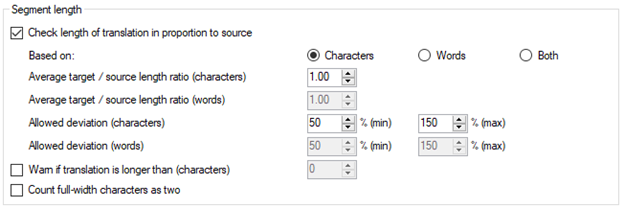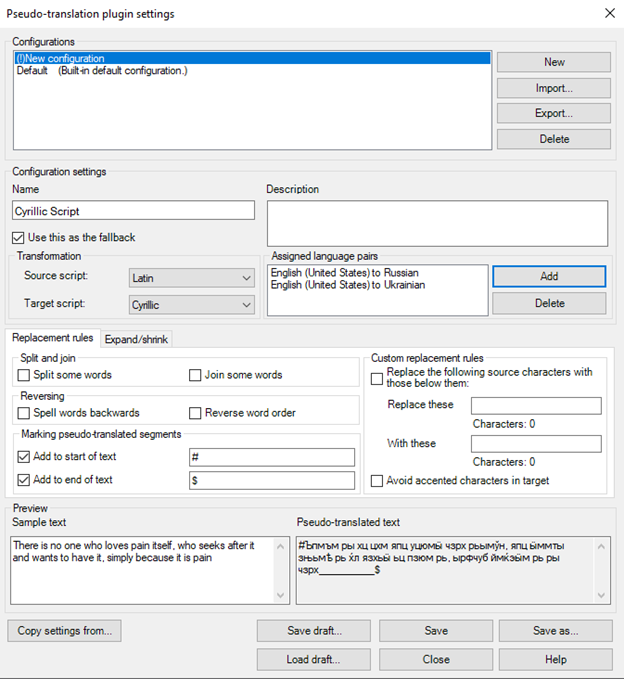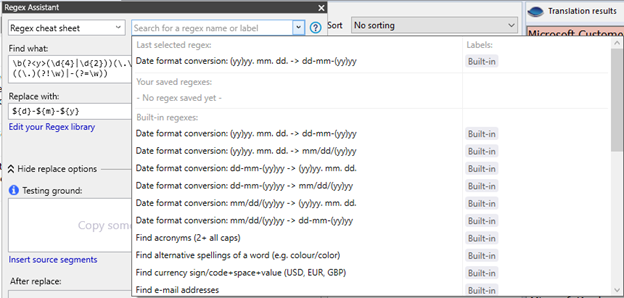The challenge when growing your language services company or managing your busy localization department is that you get proficient with your tools. What? Isn’t it good to be proficient with your translation tools? Of course it is, but all too often, once we start producing translations with a translation management system (TMS) like memoQ, the benefits right from the start are so amazing that we may get complacent in our use of these tools.
It’s time to break out of your rut and start using all those great memoQ features you have heard about and have not had a chance to learn.
Here are four “hidden treasures”—not really hidden, but not the functions that most of us will use in our earlier interactions with memoQ:
1. Subvendor Groups
What are Subvendor Groups?
A Subvendor Group allows you to assign a project to a subvendor (a group of workers) and not just to a solitary linguist working in one role (Translator, Reviewer 1, or Reviewer 2).
Why would you want to use it?
Let’s say your organization is working with an outside vendor company, a subvendor, and that vendor wants to assign its own individuals to your project, but the vendor doesn’t have their own memoQ server or you prefer they work solely on your server. You can assign a project to your subvendor, and they can then login to your server with access only to the project(s) you have assigned to them under their subvendor login. They can then setup and assign their own users on your memoQ server.
- You can collaborate with vendors without them having to provide the contact details of their contract vendors. Most vendors are reticent to provide this information since their relationships with their vendors is a competitive advantage.
- Your vendor is not required to have their own memoQ server. This gives you more opportunity to collaborate with smaller specialized teams who might be the precise fit for your project.
- Using your own server gives your firm greater control and means to ensure security.
- You no longer need to manage all the individual linguists engaged by your vendor, shifting this administrative load to them.
2. QA of segment length (string length checking)
What is QA of segment length?There may be contexts within a localization project in which you must ensure that translated segments are as long as the source segment or at least within a designated range, for example 30 – 40 characters or 120% of source segment length.

Figure 1 Setting segment length checks in memoQ's QA settings
Why would you use segment length checks?
Automation of checking string length relieves this burden from the translators, allowing them to work faster and enables correction to be done during a post-translation QA phase, using automated detection and a concise view of the segments that violate restrictions.
What are the benefits?
Your translators will be able to work faster with fewer interruptions, you will have a traceable record in the form of a QA report that demonstrates and tracks which segments were too long so those corrections can be undertaken in a holistic way with the certainty of knowing that all instances of overly long strings have been addressed.
3. Pseudo-translation engine
What is pseudo-translation?Also critical in software localization is pseudo-translation. Pseudo-translation is the machine generation of placeholder text that mimics the writing system(s) and space requirements of translation. memoQ has a pseudo-translation plugin that works like an MT plugin, but instead of generating machine translation it creates filler text automatically--based on the rules you use when configuring the pseudo-translation plugin.
Why would you use pseudo-translation?
Pseudo-translation is most used to pre-test software for localization to check for string fit and support for different writing systems in the software. Since it is built into memoQ and does not require an API token or incur any fees, pseudo-translation can also be used to test workflows, conduct training, or perform client demos.
What are the benefits of pseudo-translation?
Using the pseudo-translation plugin in memoQ will allow you to precisely check for potential translation problems that relate to the target languages writing system and expansion or contraction. As per the examples below, the plugin allows you to choose the writing system, marking of pseudo-translated segments for easy detection in the target export, and the amount of expansion or contraction you predict in the translation.

Figure 2 Configuring the Pseudo-Translation plugin

Figure 3 Setting up expansion/shrink in the Pseudo-Translation plugin
4. Regex Assistant
What is Regex Assistant?
Regex Assistant is an added feature in Quick Search and Advanced Search within the memoQ Translation Editor interface. It allows users to create regular expression searches and store them for later use.
Why would you use Regex Assistant?
The use of regular expressions during translation can help translators find text strings that may require manipulation from source to target in thousands of instances. For example, if a document contains hundreds or even thousands of part numbers that must change due to region (for example UK to DE at the beginning of a part number), using a regular expression, this can be done automatically using a regular expression stored in memoQ’s RegEx Library. Regular expression searches are helpful especially when part of a string’s characters must be modified in the same way across many instances.
What are the benefits of the Regex Assistant?
The Regex Assistant function in memoQ is a great benefit to language service companies as well as individual translators, since it allows the company to pre-configure and share regular expressions that they have already devised and tested for a large project. It is another way to enforce standardization across a large team that is translating a lot of information. A Regex Library is also a powerful way to build a robust repository of complex expressions, eliminating the need for engineering to recreate work. Another benefit is the built-in regex library within memoQ, which can used to introduce project managers and translators to regular expressions and easily train that how to start using them in their work.

Figure 4 Built-in regexes in memoQ's Regex Assistant
These are but four functions in memoQ, barely scratching the surface of its vast capability. The key here for language service companies is to not settle for basic proficiency, but rather become true experts in their tools. Given the “faster, cheaper, better” world that we all work in, we either master our tools or become slaves to the crushing amounts of data we face each day.

memoQ
memoQ is among the world's leading translation management systems. The favorite productivity tool for translation professionals around the globe.



-1.png)
